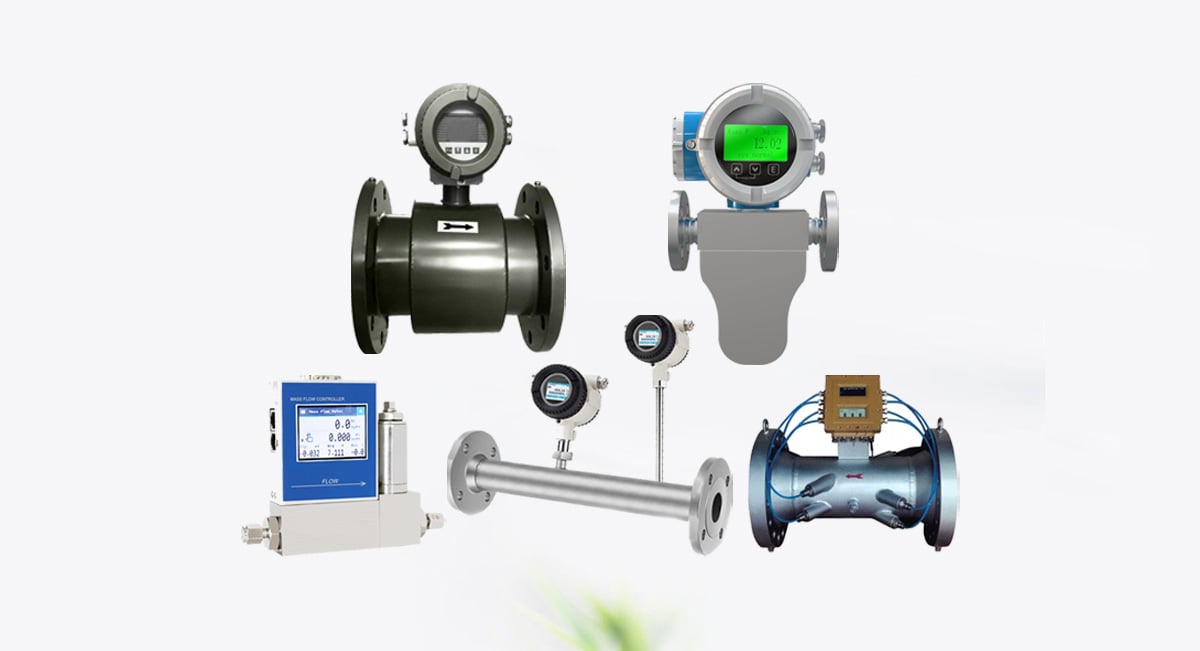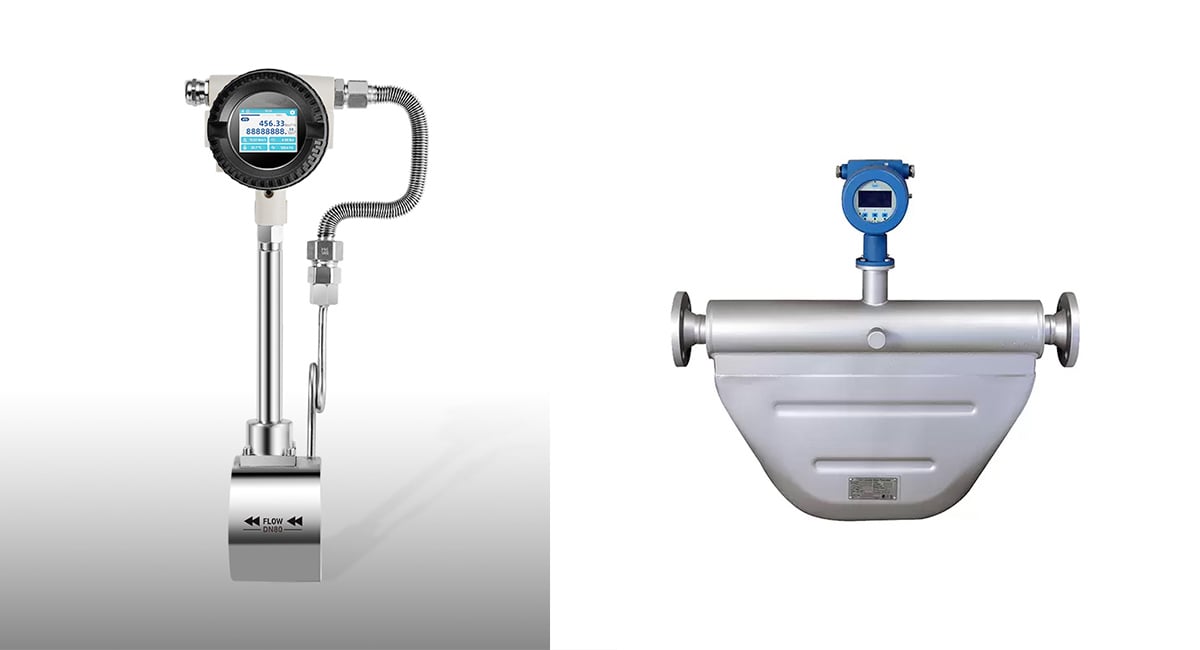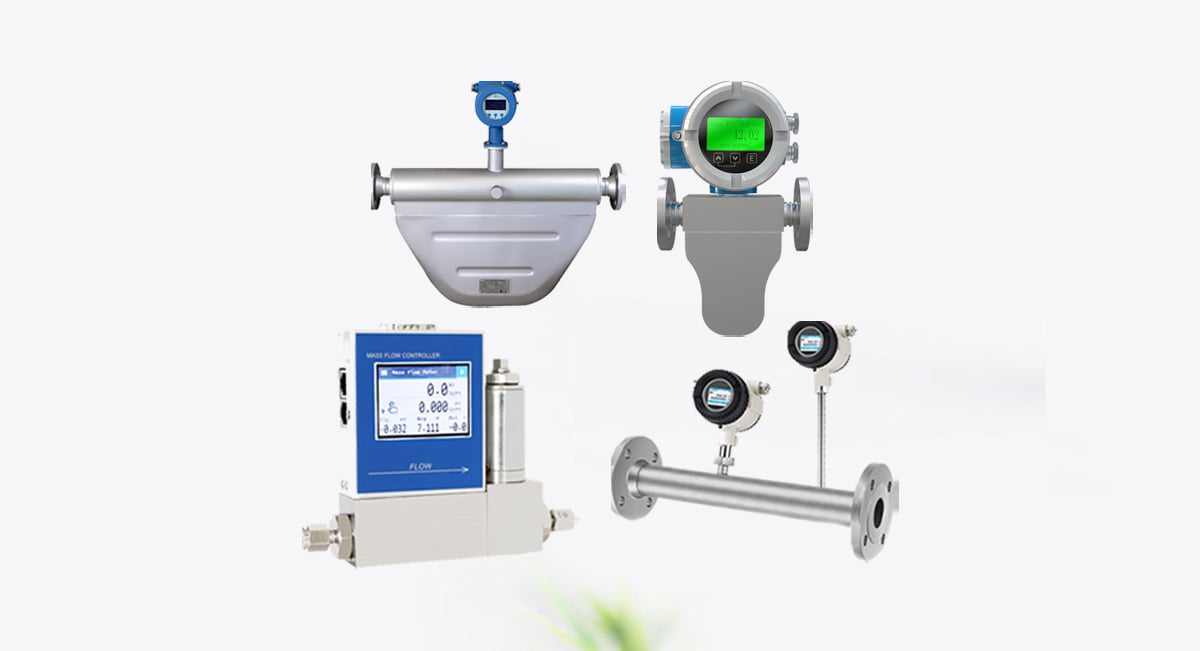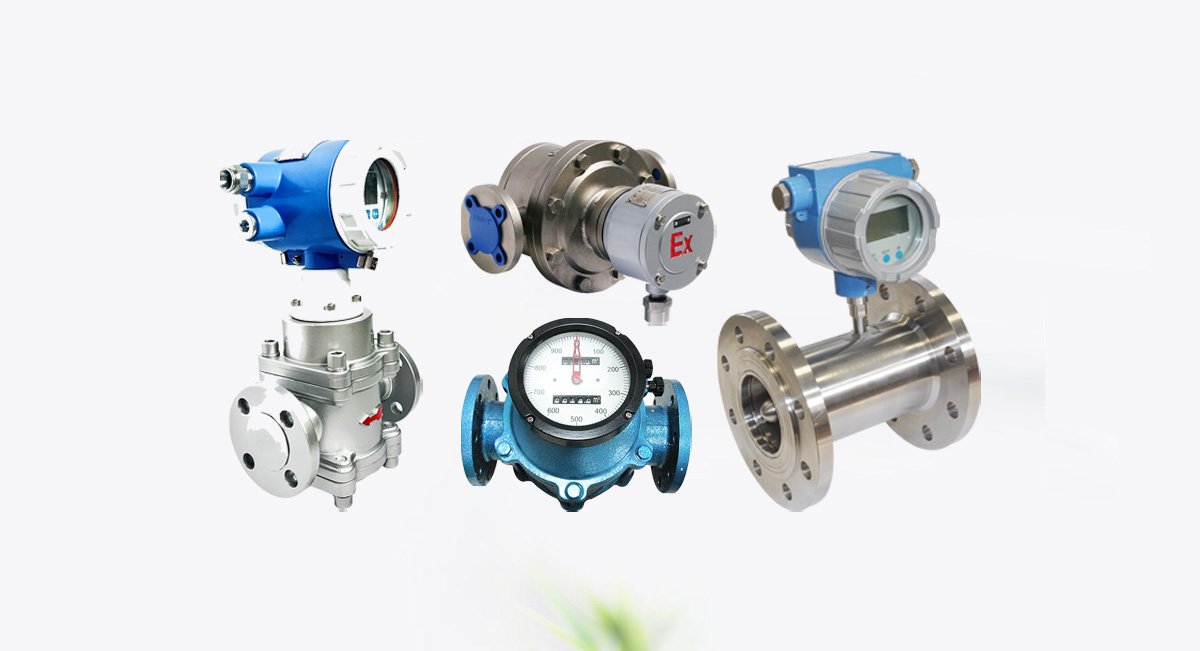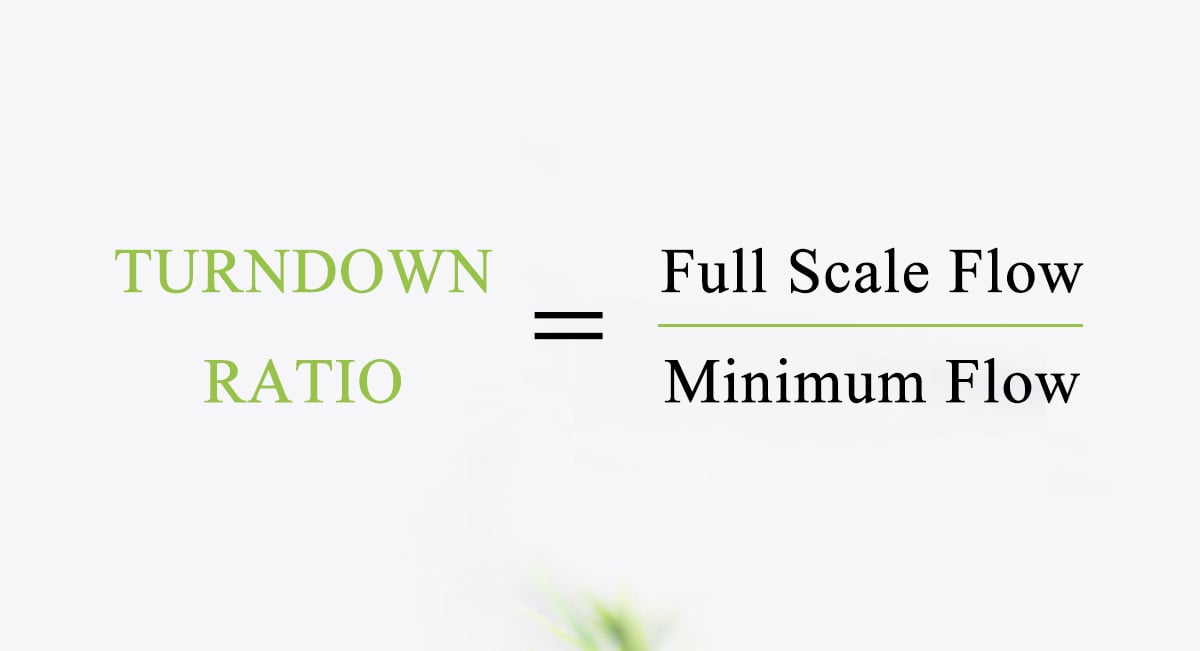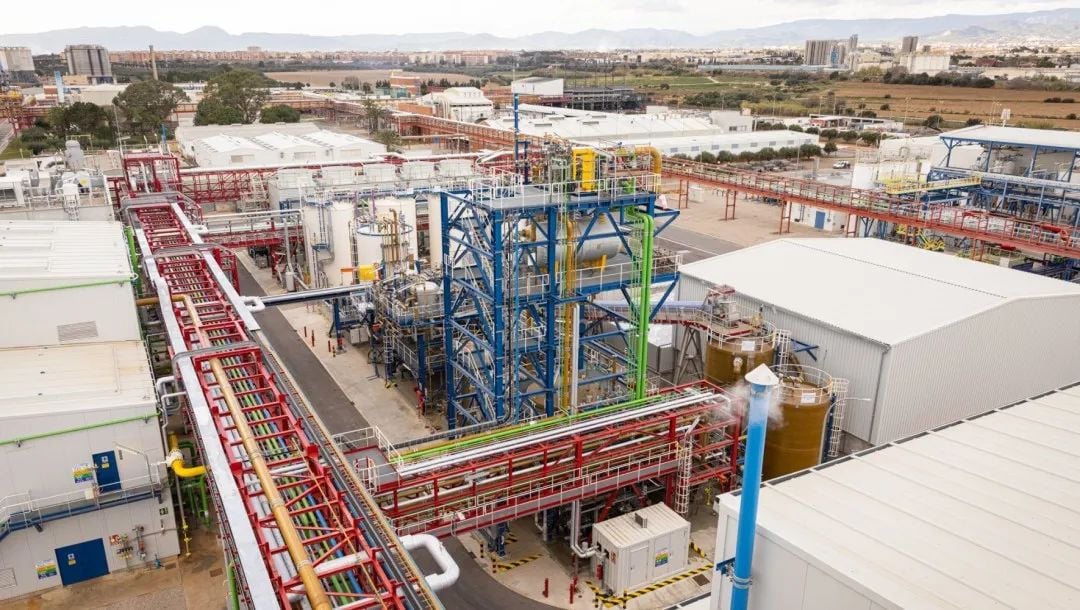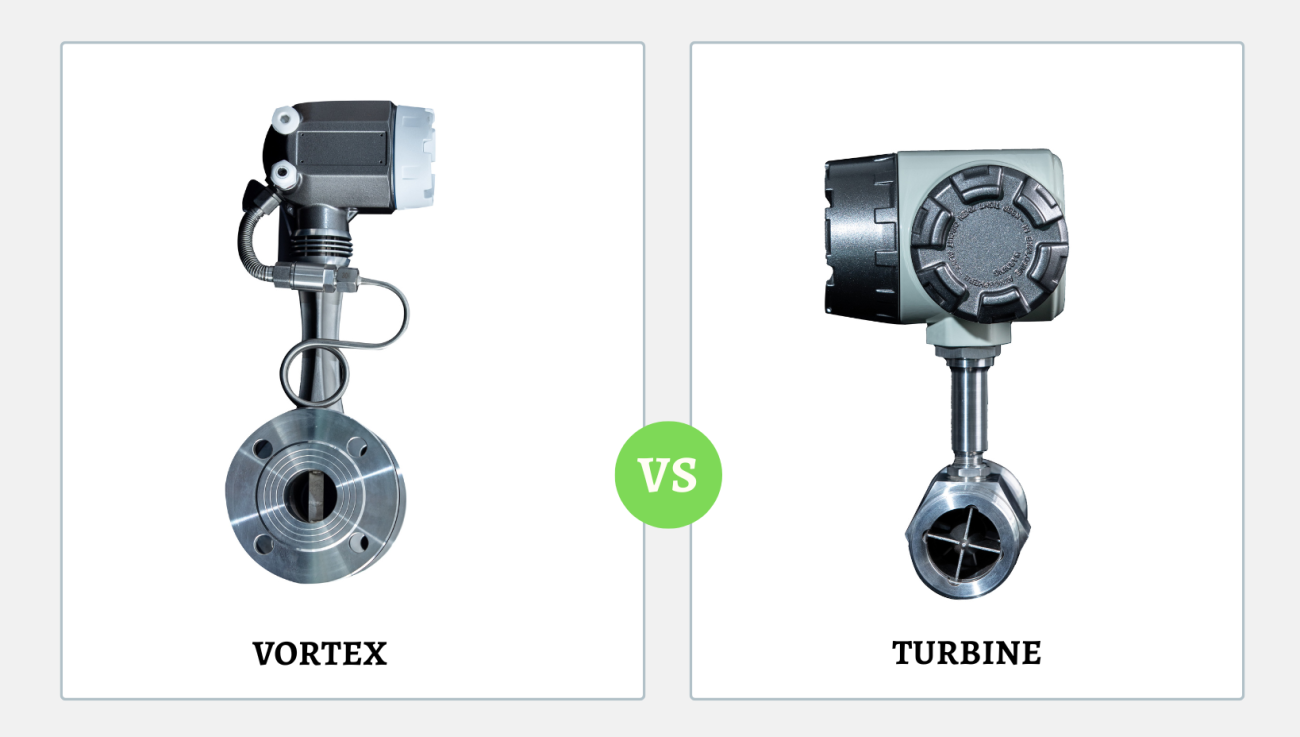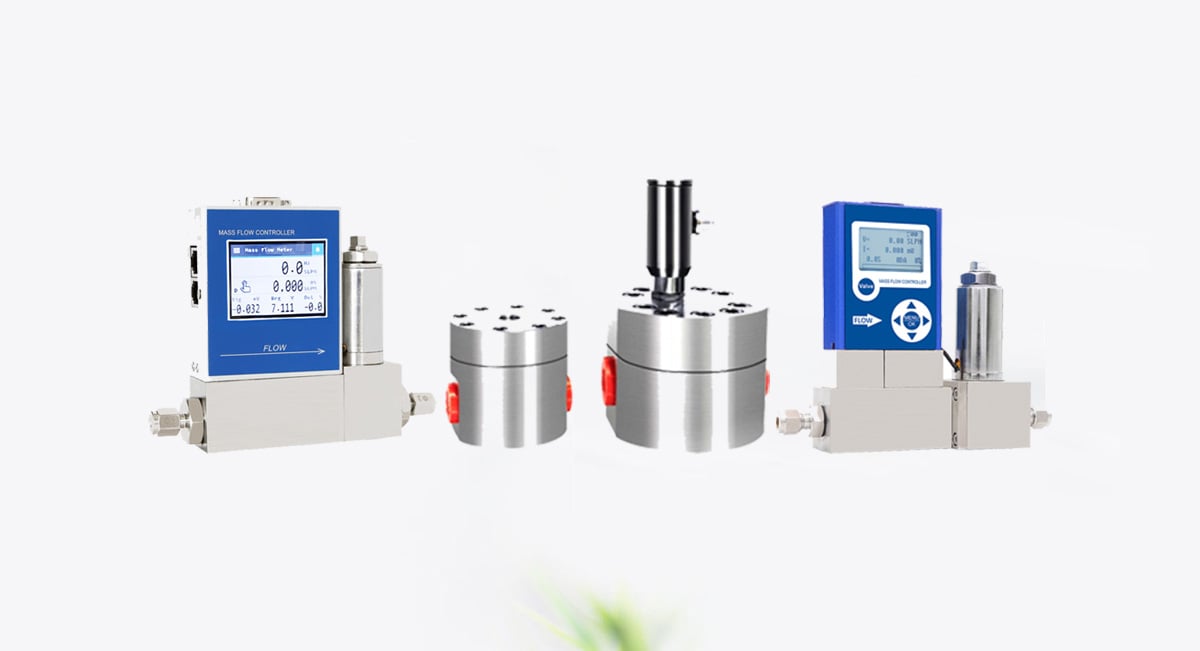In the chemical and process industries, accurate measurement and control of fluid flow are fundamental to ensuring product quality, safety, and efficiency. Chemicals often vary widely in viscosity, corrosiveness, temperature, and pressure — making flow measurement a technical challenge that requires specialized instruments.
Inhaltsübersicht
What Is a Chemical Flow Meter?
A chemical flow meter is an instrument designed to measure the rate or total volume of chemical fluids passing through a pipeline. These fluids can include liquid chemicals, corrosive acids, alkalis, solvents, fuels, and even chemical gases.
The purpose of a chemical flow meter is to ensure that precise quantities of chemicals are delivered, mixed, or reacted as required in industrial processes. Accurate flow measurement is critical in sectors such as:
- Chemical manufacturing (acid/base dosing, solvent blending)
- Pharmaceutical production (precise ingredient ratios)
- Petrochemical and refinery processes (fuel and lubricant monitoring)
- Water and wastewater treatment (chlorine or pH-control chemicals)
- Lebensmittel- und Getränkeindustrie (cleaning and sterilization chemicals)
In short, chemical flow meters are indispensable tools wherever chemical reactions, dilution, or dosage control depend on precise flow data.
The Importance and Challenges of Measuring Chemical Flow
Measuring chemical flow accurately is crucial not only for product quality and efficiency, sondern auch für safety and regulatory compliance. Many chemicals are corrosive, volatile, or toxic, and any mismeasurement can cause safety hazards, process inefficiencies, or environmental violations.
Why Chemical Flow Measurement Matters
- Accurate dosing and blending – Ensures correct chemical proportions in reactions and formulations.
- Process safety – Prevents leaks, overpressure, or dangerous reactions caused by incorrect chemical flow.
- Cost control – Reduces waste and optimizes resource consumption.
- Regulatory compliance – Maintains adherence to environmental and safety regulations.
Challenges in Chemical Flow Measurement
- Corrosive or reactive chemicals Many acids, alkalis, or solvents can corrode or degrade standard materials like stainless steel or aluminum. And the wetted part or even main part must use corrosion-resistant materials such as PTFE, PFA, PVDF, or Hastelloy.
- Varied viscosity and density Chemical fluids can range from low-viscosity solvents zu highly viscous resins or oils. Some flow meters are sensitive to viscosity changes, making them unsuitable for certain applications.
- Temperature and pressure extremes Processes like polymerization or distillation can involve high temperatures (up to 300°C) und high pressures, which affect sensor accuracy and material compatibility.
- Presence of particulates or gas bubbles Slurries or aerated liquids can interfere with flow readings in volumetric or velocity-based flow meters.
- Hazardous environments Chemical plants often require explosion-proof or intrinsically safe flow meters certified for use in hazardous areas (ATEX, IECEx).
For these reasons, selecting a proper chemical flow meter requires careful consideration of both the chemical properties und operating conditions.
Recommended Flow Meter Types for Chemical Applications
Not all flow meters are suitable for chemicals. Below are the most common types recommended for measuring different kinds of chemical fluids, along with their working principles, advantages, and limitations.
Coriolis-Massedurchflussmessgeräte
Arbeitsprinzip:
Coriolis flow meters measure the Massenstrom of fluids by detecting the deflection caused by fluid movement through vibrating tubes.
Die wichtigsten Vorteile:
- Direct measurement of Massenstrom (no need for density compensation)
- High accuracy (±0.1–0.2%)
- Geeignet für liquids, slurries, and gases
- Gut geeignet für high-viscosity or corrosive chemicals
Beschränkungen:
- Höhere Anfangskosten
- Sensitive to vibration
Am besten geeignet für:
High-value or critical processes such as acid dosing, solvent delivery, polymer productionund pharmaceutical manufacturing.
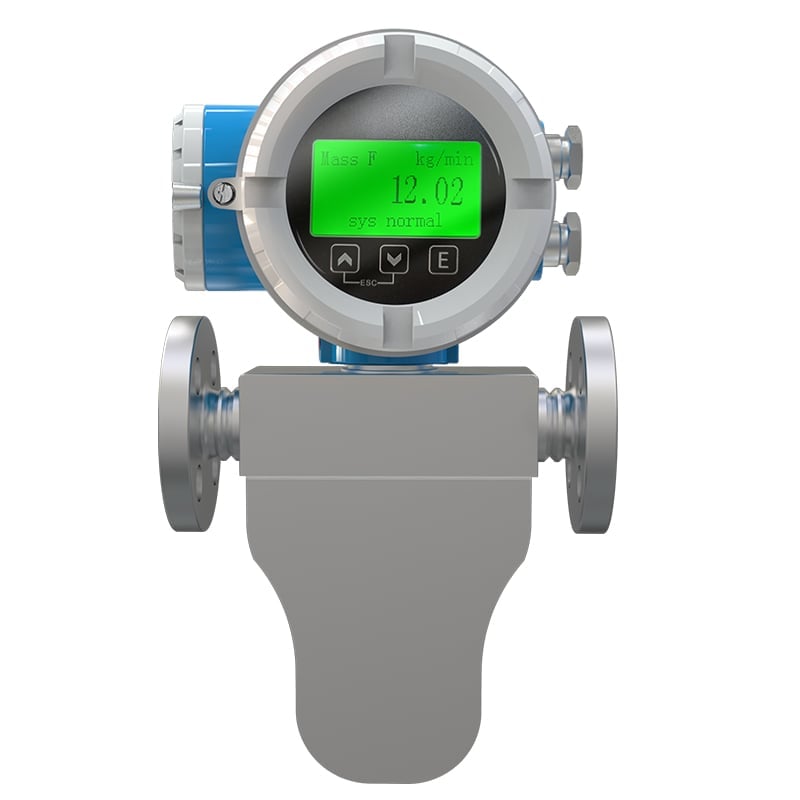
Coriolis-Massendurchflussmesser
- Hohe Genauigkeit bis zu ±0,1 %, gute Zuverlässigkeit
- Gute Nullpunktstabilität und Antistörungsleistung
- Keine beweglichen Teile, keine Wartung erforderlich
- Mehrfache digitale Kommunikation einschließlich Hart
Thermische Massendurchflussmessgeräte
Arbeitsprinzip:
These meters measure gas flow by detecting the heat dissipation caused by the gas moving past a heated sensor element.
Die wichtigsten Vorteile:
- Ideal für chemical gases like nitrogen, hydrogen, or chlorine
- Direct mass flow measurement (independent of pressure and temperature)
- No moving parts — low maintenance
Beschränkungen:
- Limited to saubere, trockene Gase. Here’re more ideas for Gasdurchflussmesser.
- Not suitable for liquids or wet gas mixtures
Am besten geeignet für:
Monitoring chemical gas flow in inerting systems, gas blending, or leak detection.
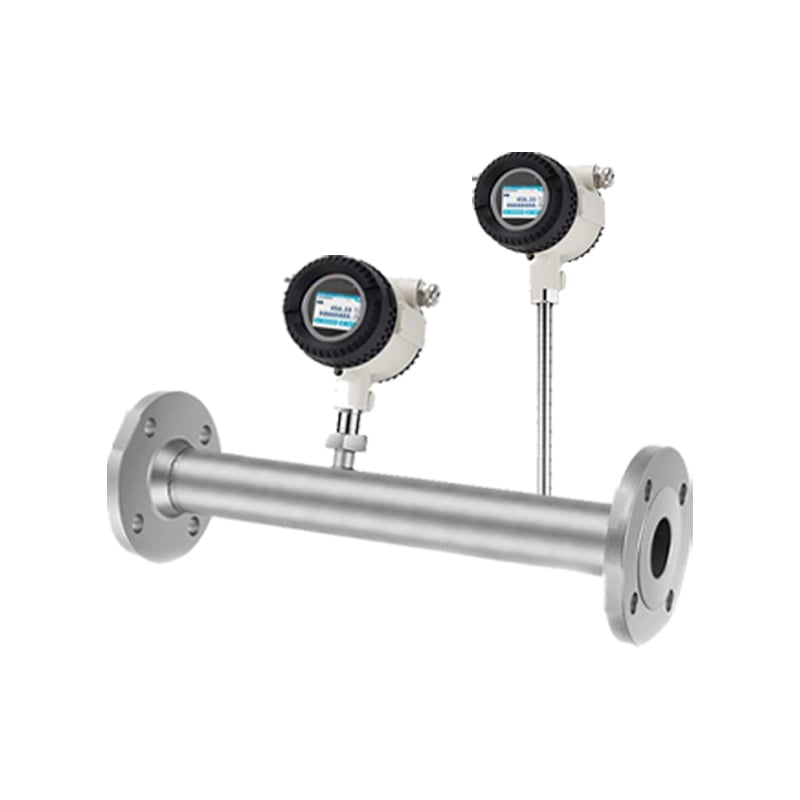
Thermische Massendurchflussmessgeräte
- Explosionsschutzklasse: Ex db IIC T6 Gb / Ex tb IIIC T80°CDb.
- Medium: Druckluft, Stickstoff, Sauerstoff, Kohlendioxid und andere nicht kondensierende Gase.
- Ultraweites Turndown-Verhältnis von 1:2500, der Messbereich reicht von 0,1 Nm/s bis 250 Nm/s.
- Volldigitale Signalverarbeitung, höhere Genauigkeit, Langzeitstabilität.
Magnetische Durchflussmessgeräte
Arbeitsprinzip:
Magnetische Durchflussmesser operate based on Faraday’s law of electromagnetic induction, measuring voltage generated by conductive fluids passing through a magnetic field.
Die wichtigsten Vorteile:
- Keine beweglichen Teile
- Excellent for corrosive, conductive liquids
- High accuracy even with varying viscosity
Beschränkungen:
- Only suitable for leitfähige Flüssigkeiten
Am besten geeignet für:
Acids, bases, salt solutions, wastewaterund chemical slurries.
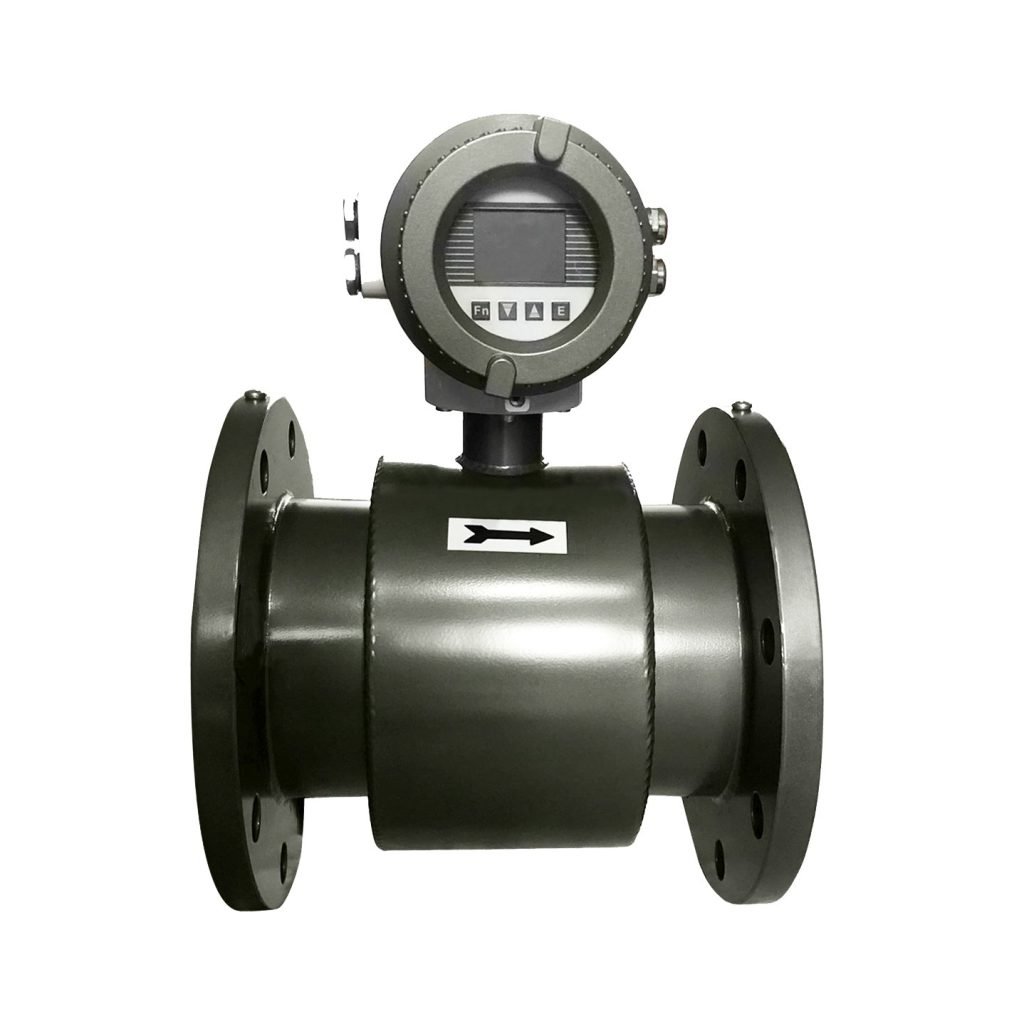
Elektromagnetische Durchflussmessgeräte
- PU-, PFA-, ETFE- oder FEP-Auskleidung: ausgezeichnete Chemikalien- und Abriebfestigkeit
- Wide range of electrode materials, including corrosion-resistant materials like Hastelloy.
- High accuracy up to ±0.2 %
Positive Verdrängungsdurchflussmesser
Arbeitsprinzip:
These meters physically trap a fixed volume of fluid and count how many times the chamber fills and empties.
Die wichtigsten Vorteile:
- Excellent for hochviskose Flüssigkeiten like oils, adhesives, or resins. Most recommended for Öldurchflussmesser und Kraftstoffdurchflussmesser.
- High accuracy even at low flow rates
- Independent of flow profile and pipe orientation
Beschränkungen:
- Contains moving parts that require maintenance
- Not suitable for abrasive or particulate-laden fluids
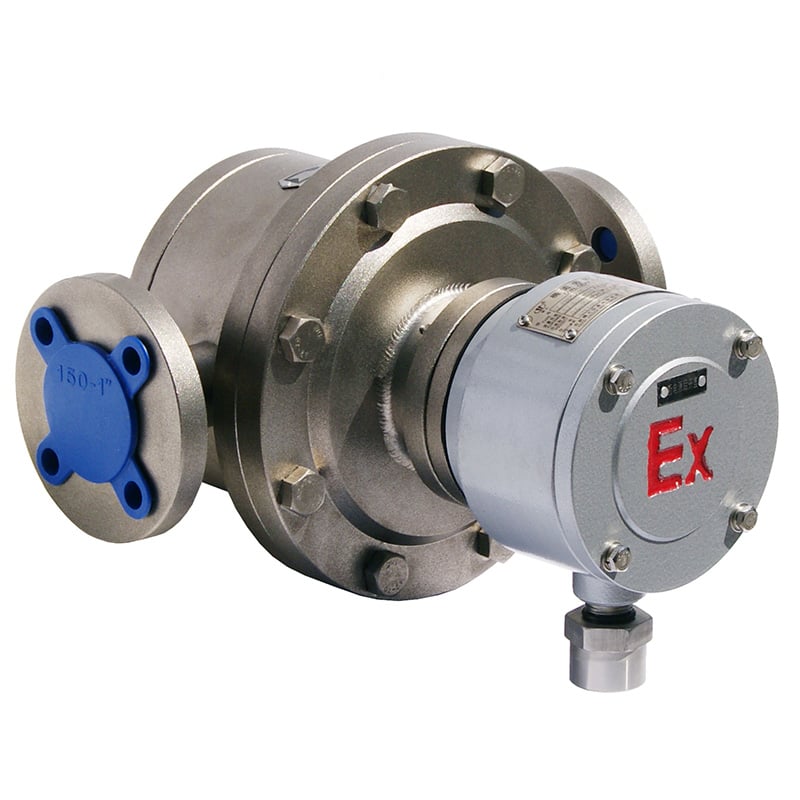
Positive Verdrängungsdurchflussmesser
- Sanfter Spiralrotorbetrieb mit minimalen Vibrationen für gleichbleibende Leistung
- Großer Messbereich mit guter Wiederholbarkeit
- Hochpräzise Messung mit einer Genauigkeit von bis zu ±0,2%
- Unempfindlich gegenüber Viskositätsänderungen
- Optimiert für die Messung von Flüssigkeiten mit höherer Viskosität
Am besten geeignet für:
Lubricants, paints, polymersund non-corrosive chemical liquids.
Ultraschall-Durchflussmessgeräte
Arbeitsprinzip:
Ultrasonic flow meters measure flow rate using sound waves — either by the Laufzeit oder Doppler method.
Die wichtigsten Vorteile:
- Nicht-intrusive (clamp-on type available)
- Works for both conductive and non-conductive fluids
- Geeignet für corrosive or sterile processes
Beschränkungen:
- Accuracy affected by bubbles or suspended solids
- Requires a clean pipe surface for clamp-on installation
Am besten geeignet für:
Solvents, cooling liquids, and corrosive acids where contamination must be avoided.
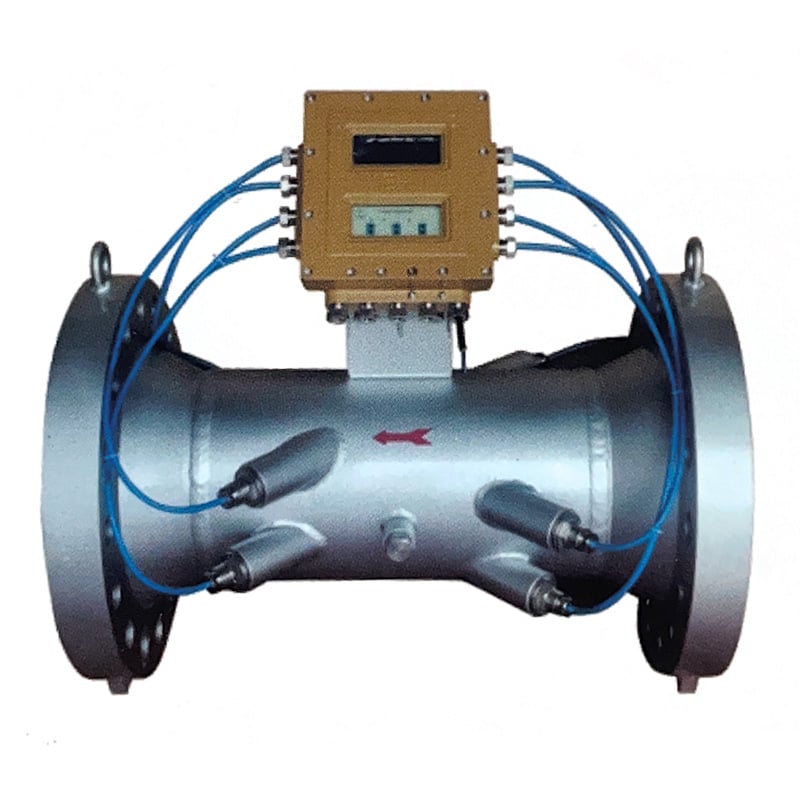
Ultraschall-Gasdurchflussmesser
- Hohe Genauigkeit für Gas bis zu ±0,5%
- Keine beweglichen Teile, kein Druckverlust, keine Verstopfung der Leitung
- Keine Schmierung oder periodische Wartung
- Die Messung wird durch die Gaseigenschaften nicht beeinflusst
- 100:1 breites Turndown-Verhältnis
- Bi-direktionale Fähigkeit
Gas Mass Flow Controllers (MFCs)
Arbeitsprinzip:
MFCs combine a mass flow sensor, a valve, and a control circuit to precisely measure and control gas flow in real-time.
Die wichtigsten Vorteile:
- Provides precise flow control, not just measurement
- Compact and suitable for laboratory or pilot-scale processes
- Funktioniert gut mit reactive or specialty gases
Beschränkungen:
- Designed primarily for niedrige Durchflussraten
Am besten geeignet für:
Gas mixing, coating processes, and catalyst research.
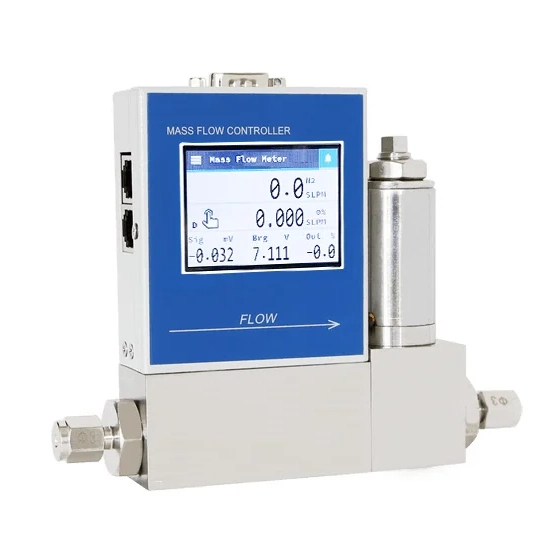
- Designed for low flow gas / liquid measuring
- It can measure high viscosity fluid and high density gas
- Designed for low flow gas / liquid measuring
- Integrierter PID-Regler zur Regelung der Durchflussmenge
- Direkte Messung des Massendurchflusses, automatische Temperaturkompensation
How to Choose the Right Chemical Flow Meter
Selecting the correct chemical flow meter requires evaluating several technical and chemical parameters. Below are the main criteria to guide your selection:
1. Identify the Chemical Properties
- Korrosivität: Choose materials like PTFE, PFA, or Hastelloy for aggressive acids or alkalis.
- Leitfähigkeit: Use magnetische Durchflussmesser for conductive fluids; for non-conductive fluids, consider ultrasonic or Coriolis types.
- Viskosität: For viscous fluids, positive Verdrängung oder Coriolis flow meters perform better.
2. Define the Flow Range and Pipe Size
Each meter has an optimal flow range. Oversized or undersized meters will reduce accuracy. Always match the flow meter’s range to your process flow rate.
3. Operating Conditions
- Temperature and pressure must be within the meter’s limits.
- In hazardous environments, select explosion-proof oder intrinsically safe models.
4. Installation Requirements
- Consider available space, orientation, and maintenance access.
- Some flow meters (like ultrasonic clamp-on types) are ideal when pipe modification is not possible.
5. Output and Communication
Modern chemical flow meters support 4–20 mA, Modbus, HART, or digital outputs for integration into process control systems.
6. Accuracy and Maintenance
If precision is critical (e.g., chemical blending or dosing), choose Coriolis oder magnetische Durchflussmesser. Some suppliers also provide very high accuracy PD flow meters like Metlan Instrumente.
A chemical flow meter plays a vital role in controlling and monitoring chemical processes with accuracy and safety. Because of the diversity of chemical fluids — from corrosive acids to viscous oils — there is no single flow meter suitable for all situations. Ultimately, the right flow meter should match the chemical’s physical properties, the process conditions, and the required accuracy.
About Metlan Instruments Chemical Flow Meters
Unter Metlan Instrumente, we specialize in high-precision flow measurement and control solutions for industrial applications. Our product range includes thermische Massendurchflussmesser, Coriolis-Massendurchflussmesser, positive displacement metersund mass flow controllers designed for both gases and liquids — including corrosive and specialty chemicals.
With advanced sensor technology and robust materials, Metlan Instruments ensures long-term stability, corrosion resistance, and exceptional accuracy — helping chemical plants, laboratories, and process industries achieve precise and reliable flow measurement.

